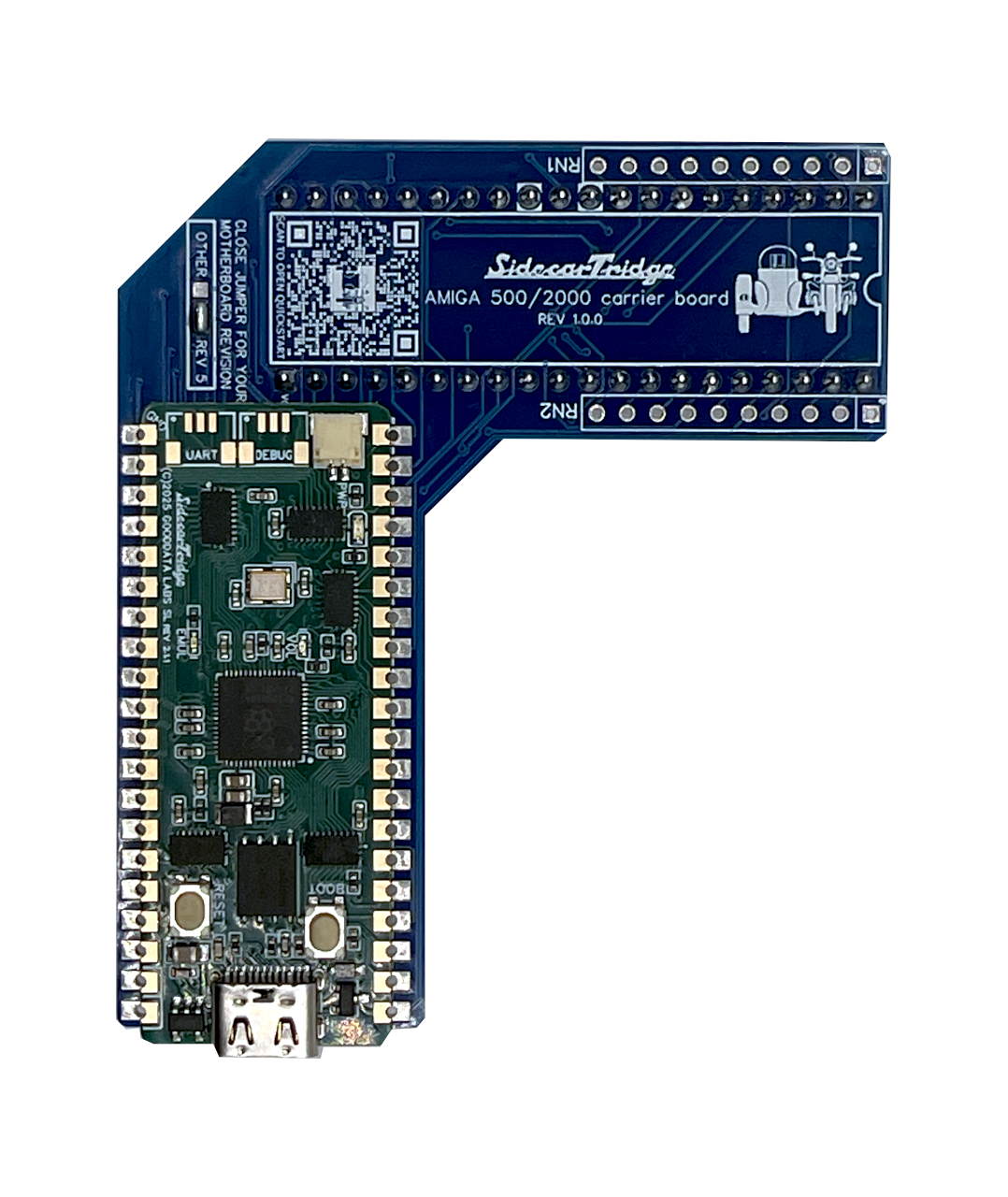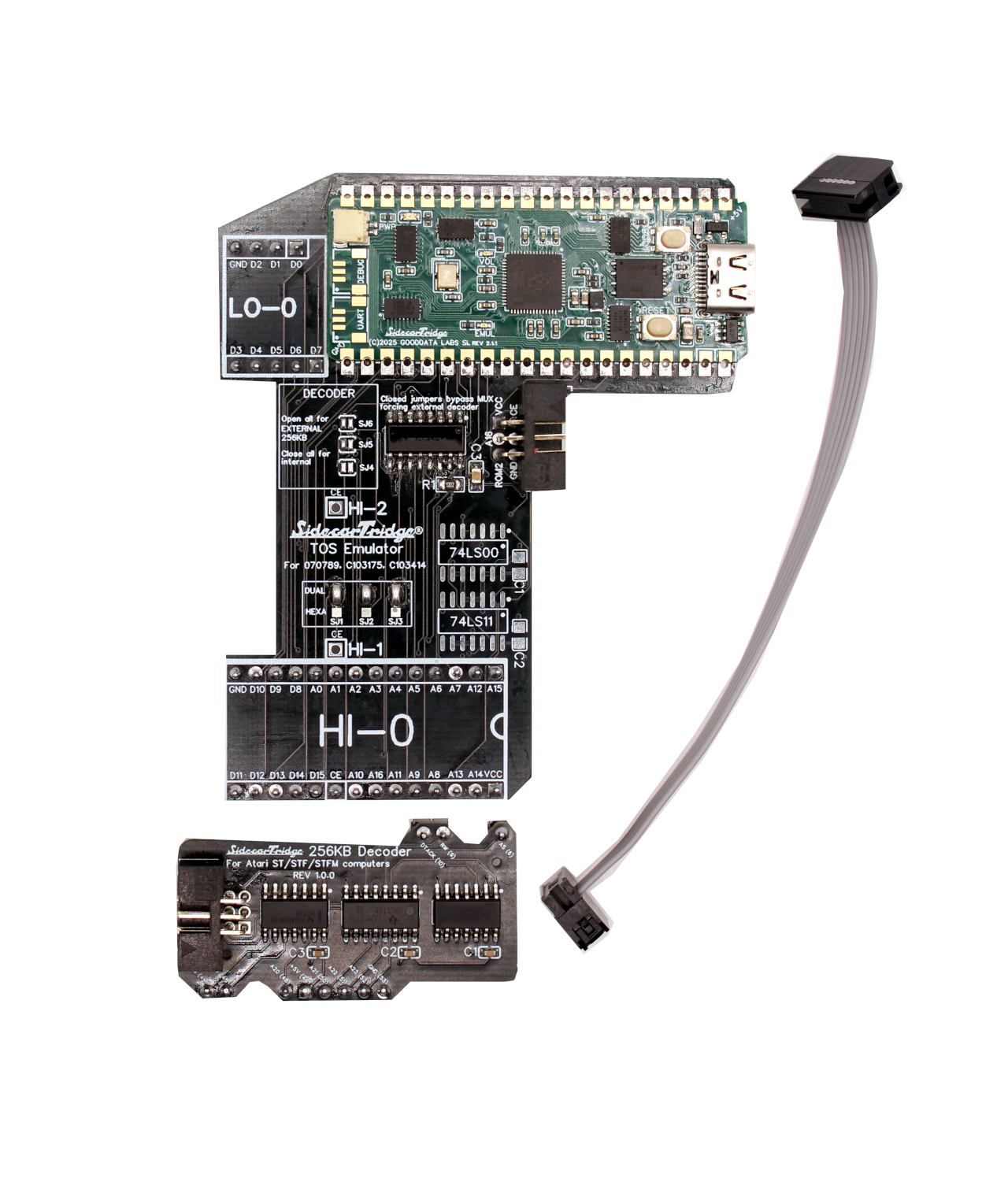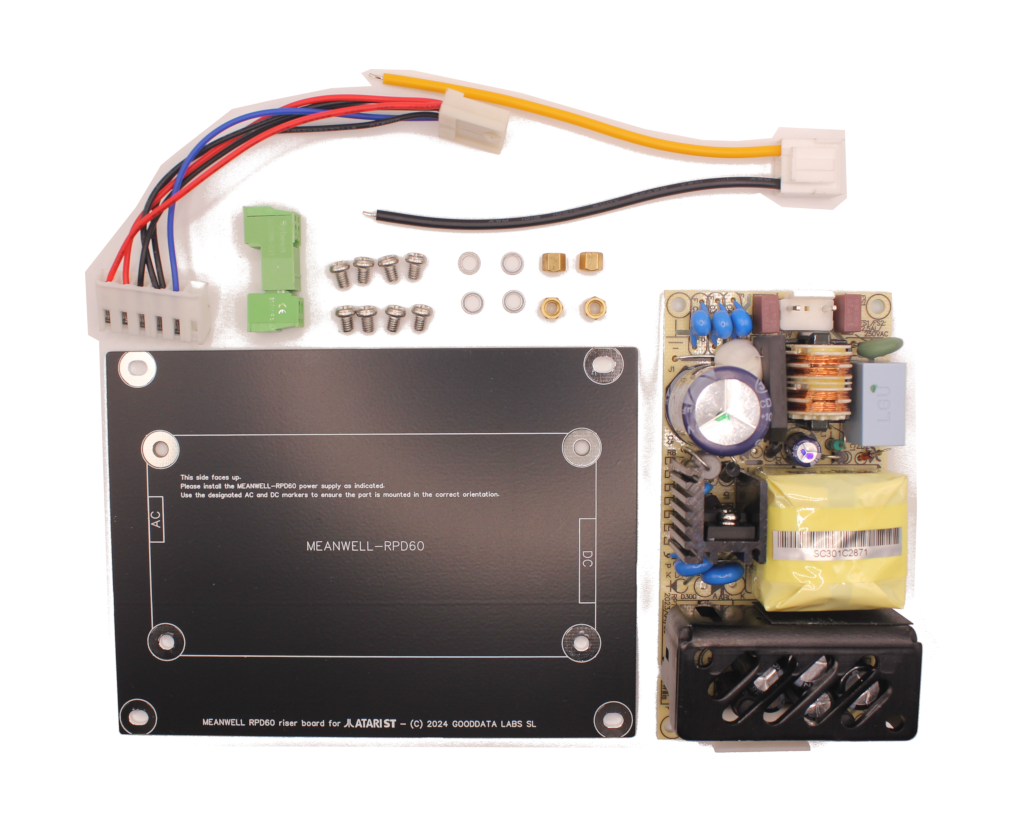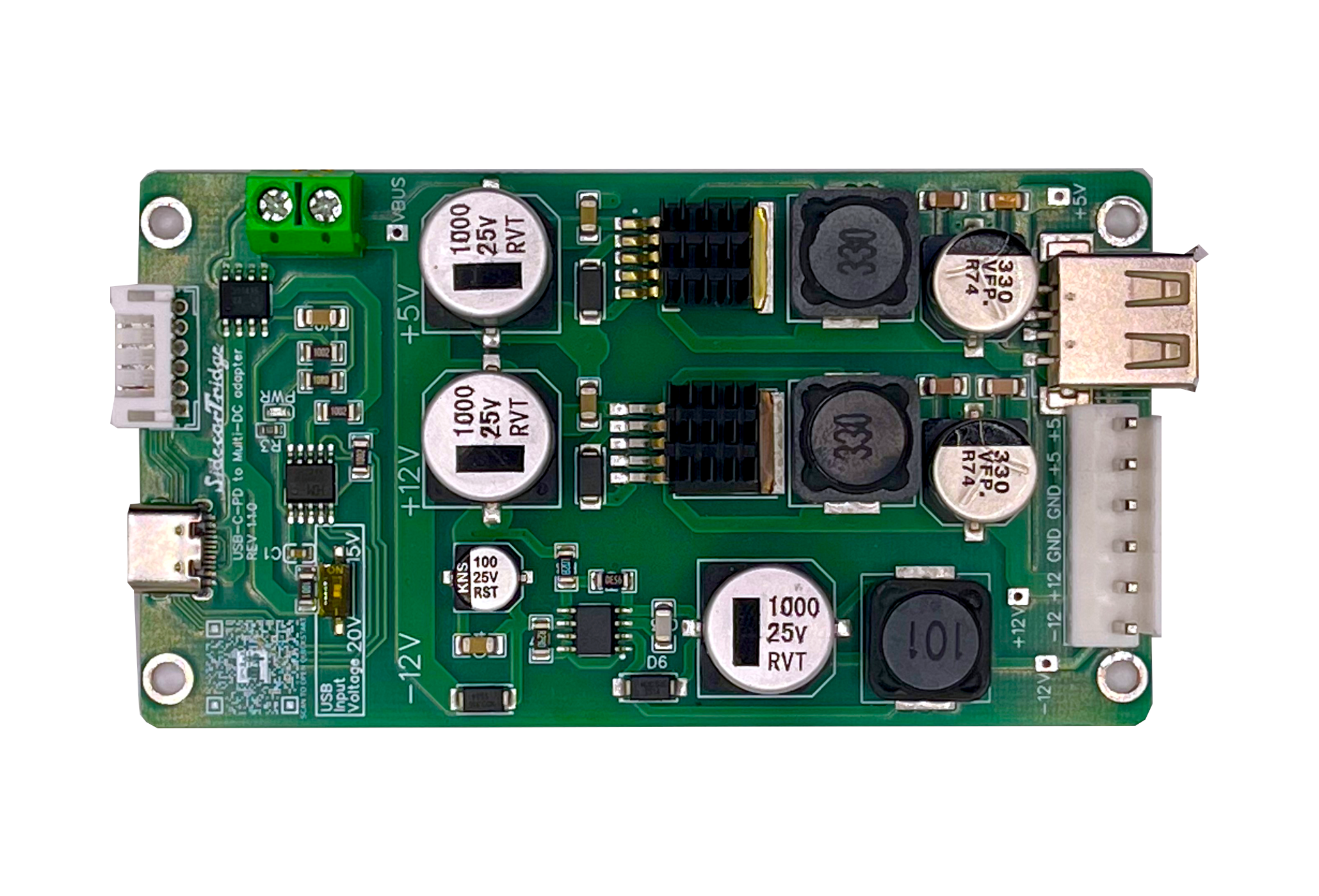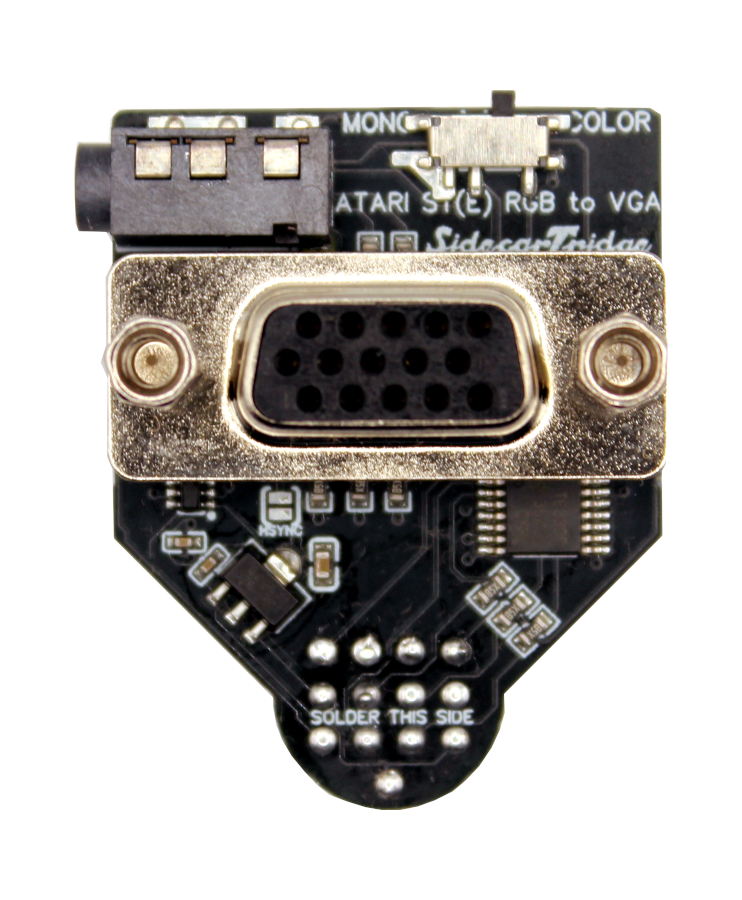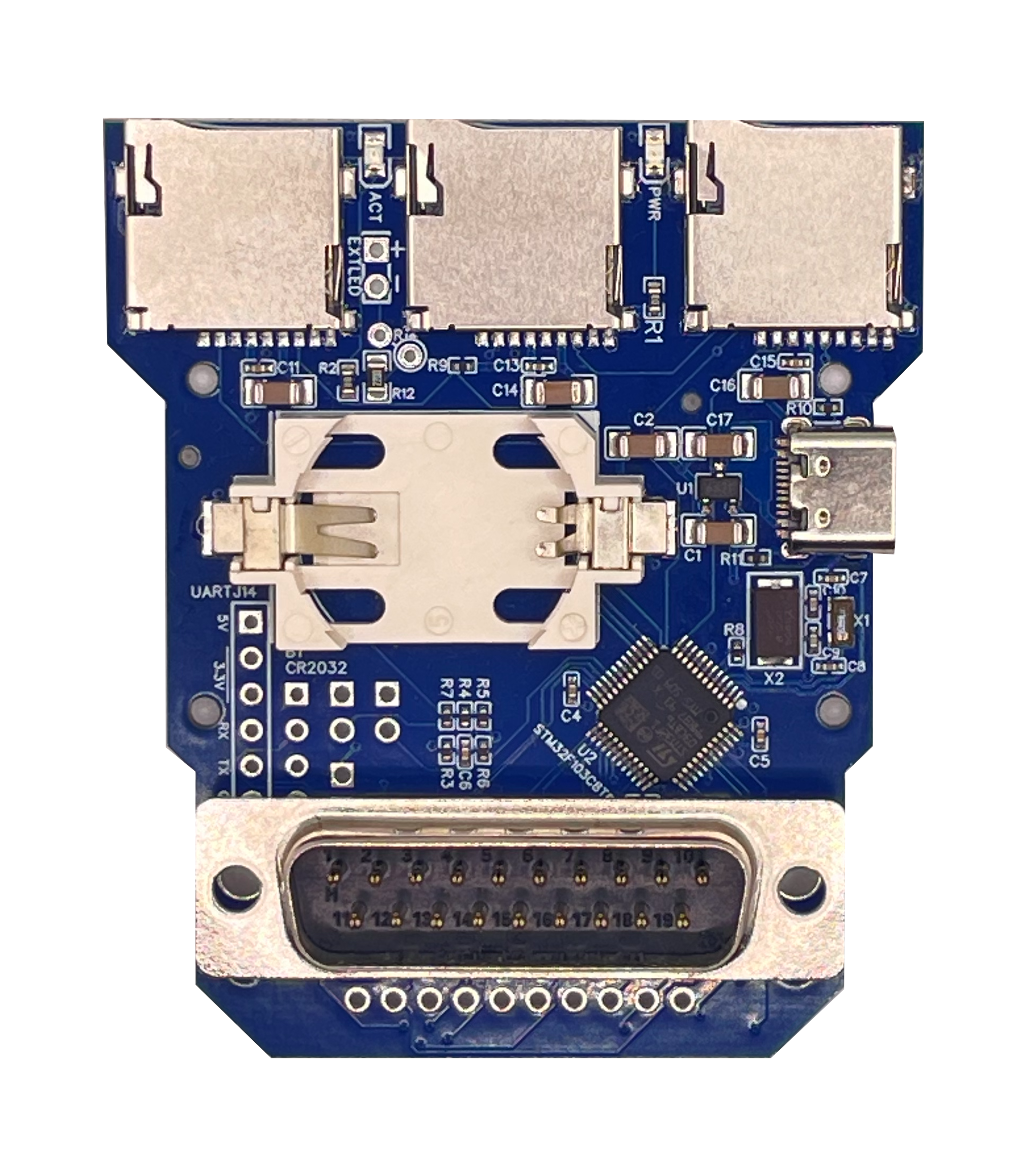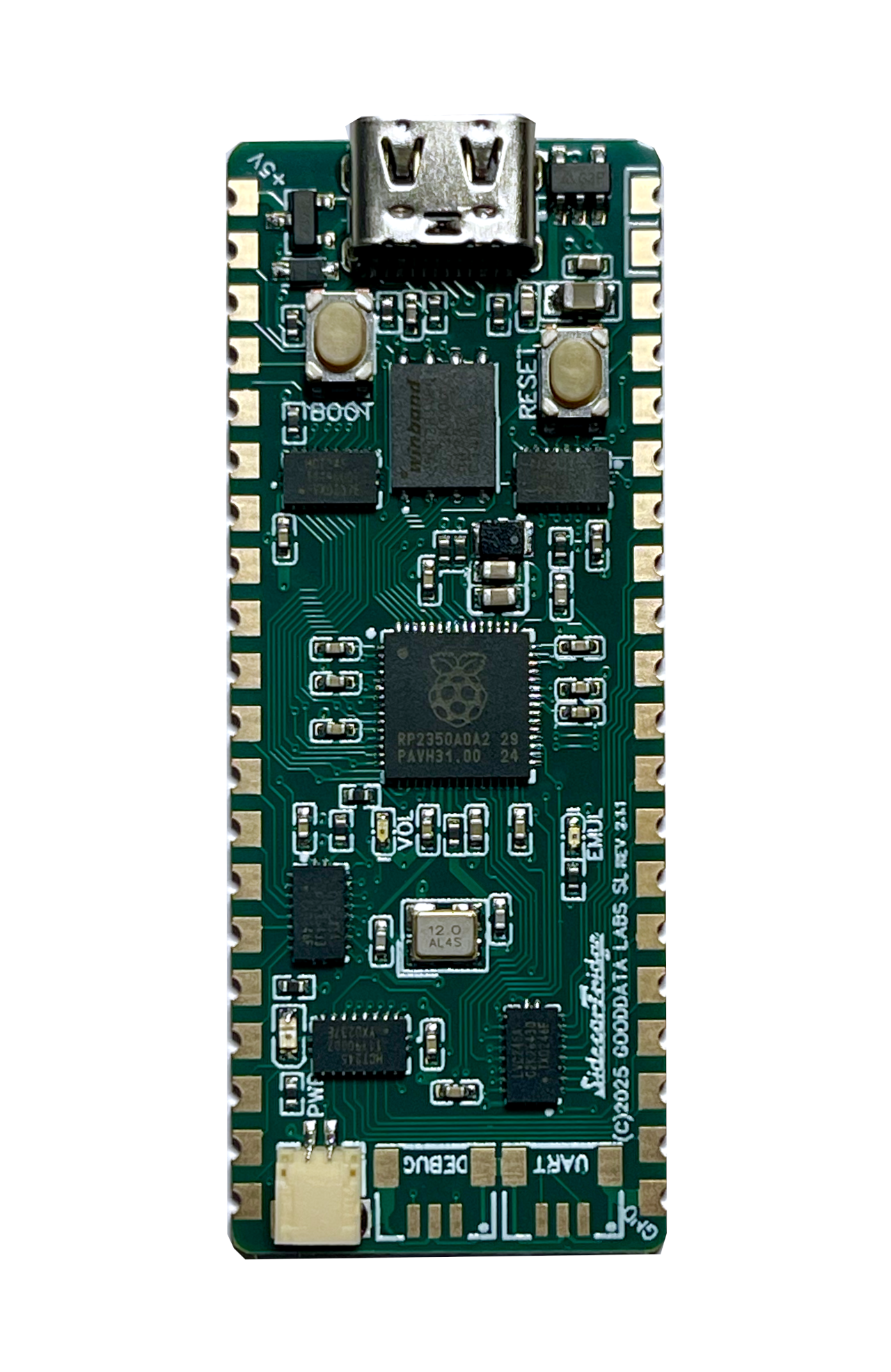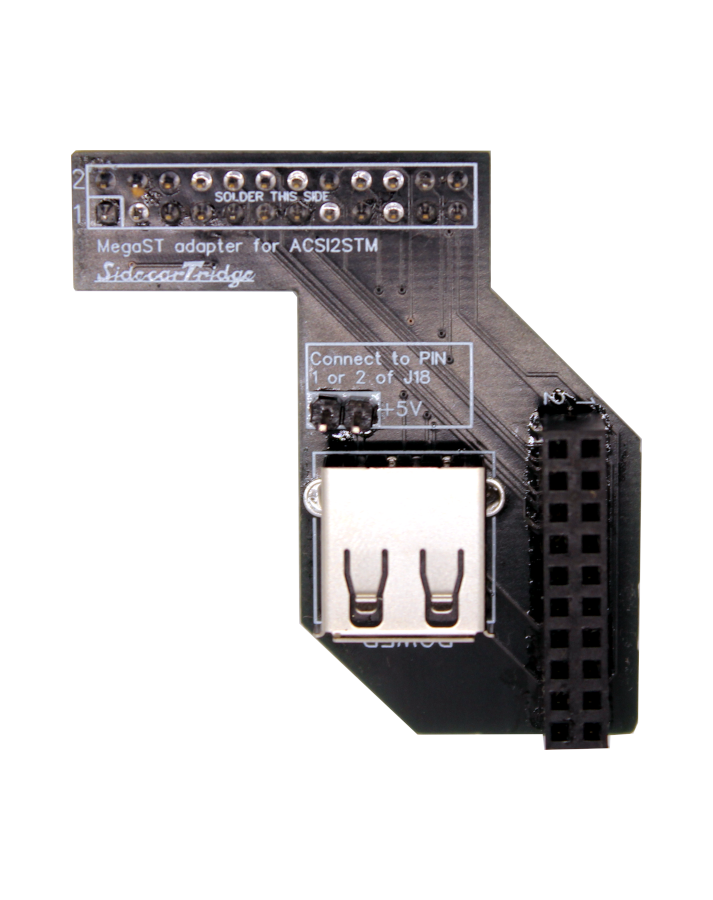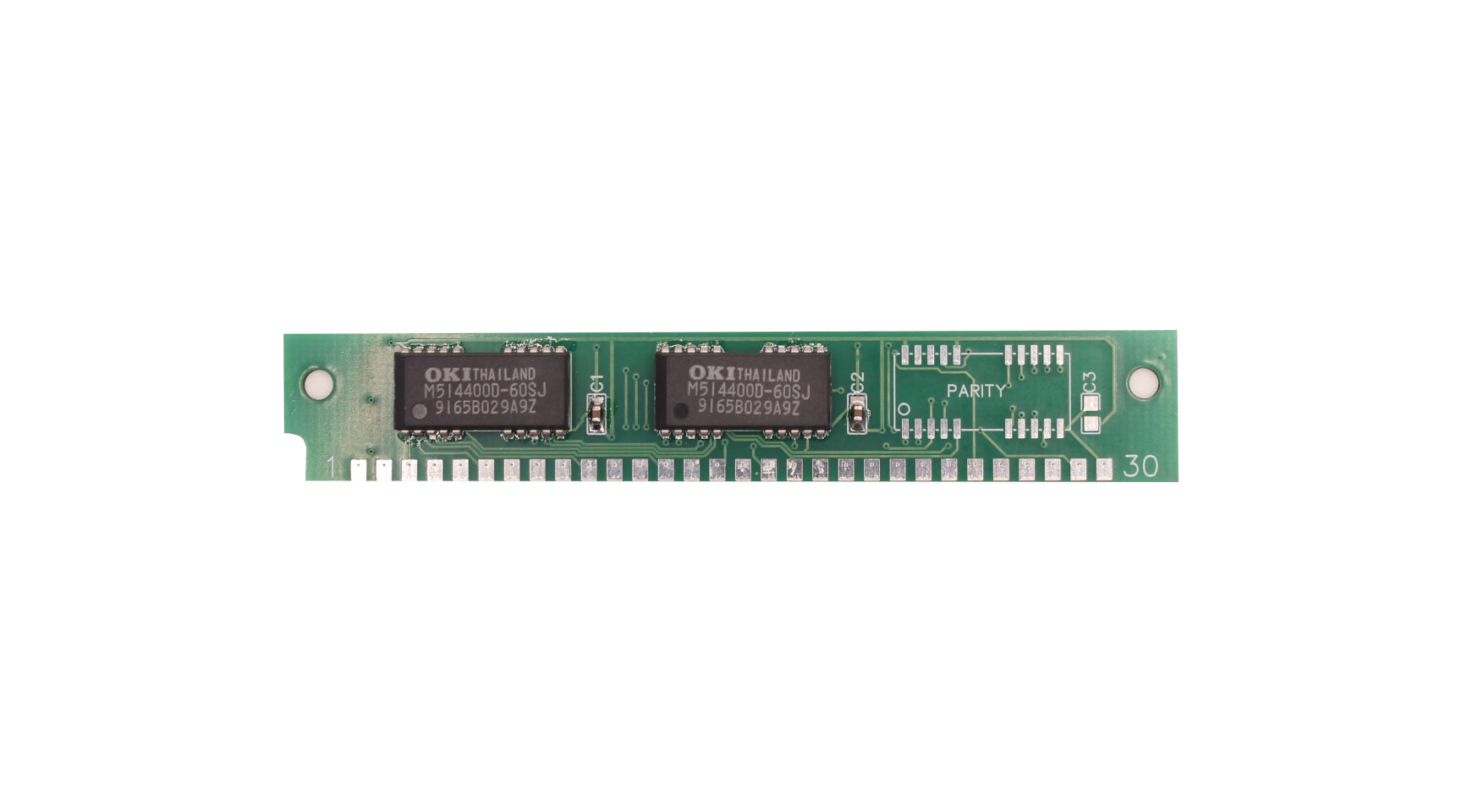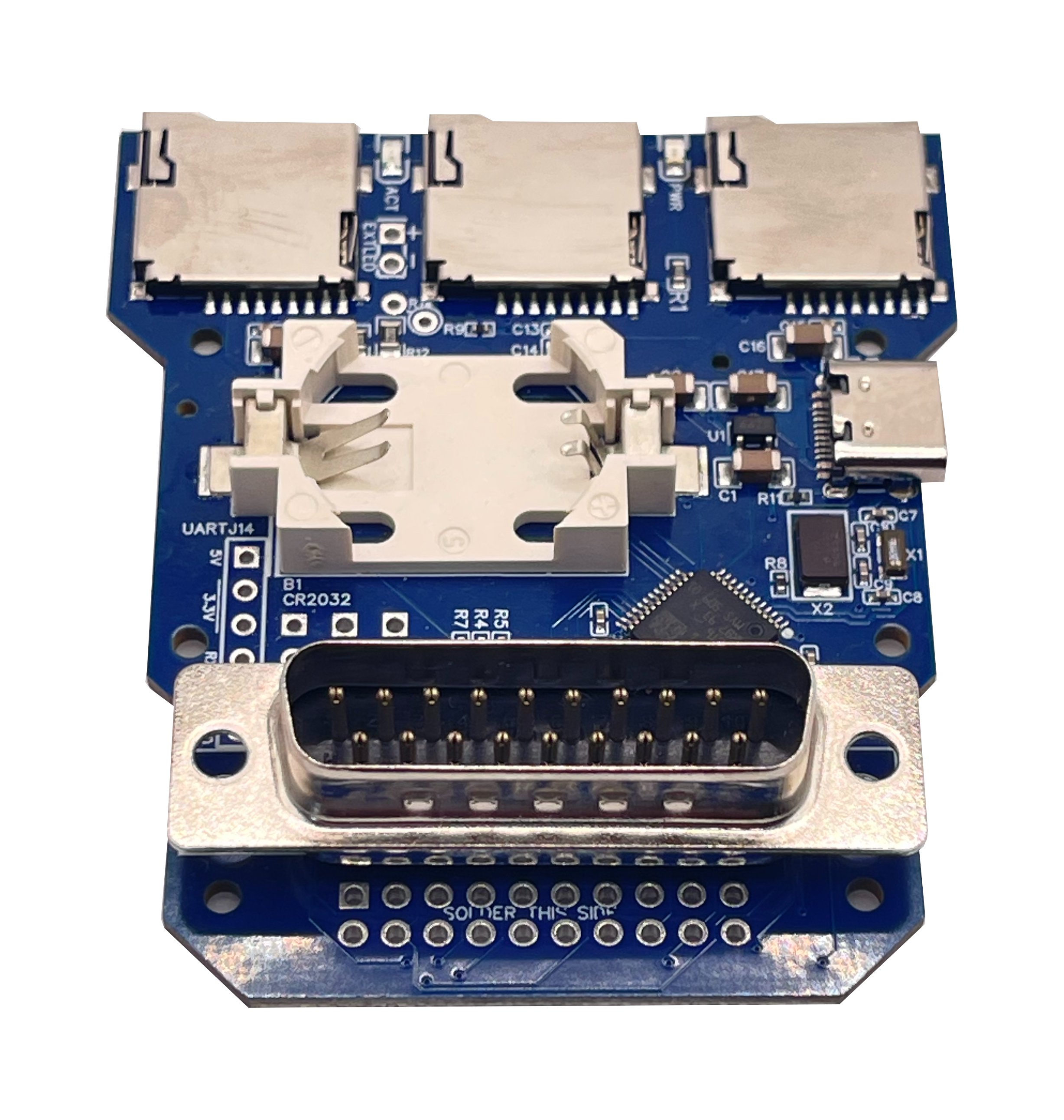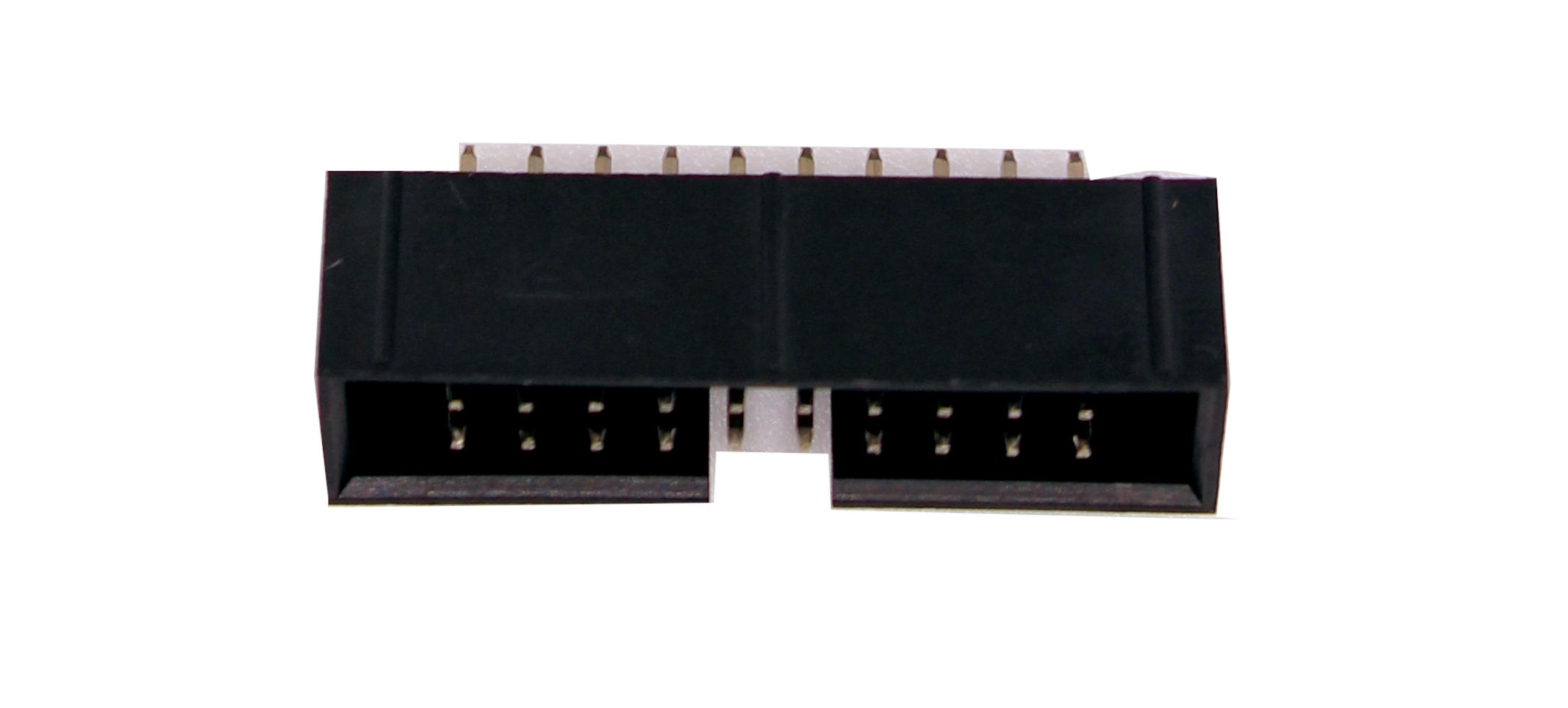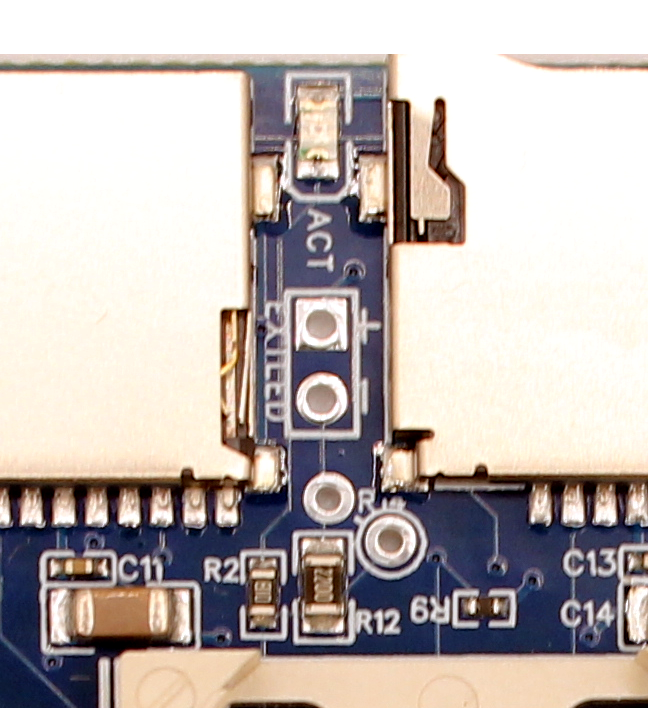A modern hard disk device for Atari ST/MegaST/STE/MegaSTE
The ACSI2STM is an open-source hard drive emulator designed for Atari ST computers, enabling the use of SD cards as storage devices. Powered by an STM32 microcontroller, it bridges the Atari’s ACSI port with modern SD cards, providing a cost-effective, reliable, and versatile solution for expanding storage on vintage Atari systems.
Now Featuring a D-SUB DB-19 Connector!
The community’s most requested feature is finally here. The new ACSI2STM board comes equipped with a D-SUB DB-19 connector, eliminating loose connections on aging ACSI ports. Simply plug it in and enjoy seamless operation!
After extensive testing of the original ACSI2STM device, SidecarTridge has introduced an enhanced version with several key improvements:
-
Upgraded 4-Layer PCB Design: This new design ensures optimal performance, even in older and noisier computer systems, by reducing issues like crosstalk and electrical interference.
-
Premium microSD Card Slots: Utilizing the same high-quality slots as the SidecarTridge Multi-device, these are more robust and feature a built-in eject mechanism, facilitating easy insertion and removal of microSD cards.
-
Optimized Crystal Oscillator Circuit: Adjustments in the capacitors of the crystal oscillator circuit have been made to enhance performance and stability. This modification addresses a flaw in the original design that could cause not working or prolonged boot times. For detailed information on how we figured out the issue and recalibrated the capacitors in the crystal oscillator circuit, please refer to the GitHub issue discussion.
-
External LED connector: The new design includes a connector for an external LED, allowing users to display the activity of the ACSI2STM device. This feature is handy for those who prefer to place the ACSI2STM inside their Atari Mega ST or Mega STE, as it visually indicates the device’s status without opening the case.. You can learn how to connect the external LED in the documentation.
The updated ACSI2STM board, known as the “Castillian” ACSI2STM, features a slightly larger design with a distinctive castellated shape. This new design maintains full compatibility with the original ACSI2STM firmware, preserving all existing features and functionalities.
Key Features:
- Broad Compatibility: Supports Atari models such as 520 STF, 1040 STE, Mega ST, and Mega STE.
- Operating Modes:
- GemDrive Mode: Offers seamless access to SD cards formatted with FAT16, FAT32, or ExFAT. This mode eliminates the need for additional drivers, making it easy to transfer files between your Atari and modern PCs.
- ACSI Mode: Emulates traditional ACSI hard drives and supports multiple partitions. This mode requires Atari-compatible hard disk drivers, offering enhanced compatibility with legacy software.
- Real-Time Clock (RTC): Includes UltraSatan-compatible RTC functionality, enabling accurate timekeeping on the Atari. A 3V lithium battery (CR2032 not included) is required for this feature.
- Firmware Upgradeable: The ACSI2STM firmware can be updated directly from the Atari, ensuring compatibility with future enhancements and bug fixes.
Place it inside your Megas: The Internal Riser Boards Option!
Traditionally, the ACSI2STM device connects externally via the ACSI port. To enhance integration, we’ve developed two new riser boards that enable the internal installation of the ACSI2STM device within Atari Mega ST and Mega STE computers. This allows users to seamlessly incorporate the ACSI2STM into their systems, eliminating the need for external connections and power supplies, while preserving the original aesthetics of the computer.
Benefits of Internal Installation:
- Internal Power Supply: No more external power wires; the device draws power internally.
- Preserved Aesthetics: Maintains the original look of your Atari by keeping the ACSI2STM device concealed within the case.
- Reduced Wear: Minimizes wear on external ports and connectors by eliminating the need for constant plugging and unplugging.
- Space Efficiency: Frees up workspace by removing external devices and cables.
Kits Available:
ACSI2STM Compact Kit
When purchasing the ACSI2STM kit, you’ll receive:
- A PCB with all components soldered and tested, including the DB-19 connector for the Atari ACSI port.
- A DB-20 connector to expand the ACSI port to Satan Disk and other devices (not soldered).
- A 1x2-pin header for the external LED (not soldered).
- Pre-installed latest stable firmware.
The user will need to provide:
- A USB-C cable to power the ACSI2STM.
- An SD, SDHC, or SDXC card to store files. They must be formatted in FAT16, FAT32, or ExFAT for GemDrive mode, or with Atari-compatible hard disk drivers for ACSI mode as described in the documentation.
- A functional Atari ST/MegaST/STE/MegaSTE/TT computer with an ACSI port.
- A 3V lithium battery (CR2032) for the RTC feature (optional).
- An external LED (optional).
Internal Riser Board for Mega STE + ACSI2STM Compact Kit:
- ACSI2STM Compact Kit
- Riser board specifically designed for Mega STE.
- Pre-soldered 30-pin female connector.
- Pre-soldered 20-pin female connector.
- Pre-soldered USB-A power-only female connector.
- USB-A to USB-C cable (length varies between 10 cm and 15 cm, depending on availability).
Internal Riser Board for Mega ST + ACSI2STM Compact Kit:
- ACSI2STM Compact Kit
- Riser board specifically designed for Mega ST.
- Pre-soldered 24-pin female connector.
- Pre-soldered 20-pin female connector.
- Pre-soldered USB-A power-only female connector.
- Two pre-soldered male pins for 5V power connection.
- 20 cm female-to-female Dupont red connector.
- USB-A to USB-C cable (length varies between 10 cm and 15 cm, depending on availability).
Installation
The ACSI2STM is already pre-assembled and embeds the latest firmware, making it ready for use out of the box. The only steps required are to prepare an SD card and connect to your Atari system:
3. SD Card Preparation
- For GemDrive Mode: Format the SD card with FAT16, FAT32, or ExFAT to allow the Atari to access files directly without additional drivers.
- For ACSI Mode: Create disk images or partitions compatible with Atari’s hard disk drivers for legacy software.
4. Operation
- Insert the prepared SD cards into the slots.
- Connect the ACSI2STM to the Atari’s ACSI port.
- Power the ACSI2STM using a USB-C cable (not included).
- Power on the system. The Atari should detect the SD card as a hard drive, ready for file storage and retrieval.
This product is intended for users familiar with basic embedded systems and vintage computer hardware. While we offer support for hardware setup and firmware installation, the firmware is provided as-is. It is actively and continuously developed, and we encourage users to contribute by reporting bugs and suggesting features on the GitHub repository.
Frequently Asked Questions
Is the SidecarTridge “Castillian” ACSI2STM compatible with the original ACSI2STM firmware?
Yes, the SidecarTridge “Castillian” ACSI2STM is 100% compatible with the original ACSI2STM firmware.
What is the difference between GEMDRIVE and ACSI modes?
- GEMDRIVE Mode: Allows easy file transfers between Atari and modern PCs using FAT16, FAT32, or ExFAT formatted SD cards. No additional drivers are needed.
- ACSI Mode: Emulates a traditional ACSI hard drive, supporting legacy Atari software with custom partitions. Requires Atari hard disk drivers like HDDRIVER or ICD Pro.
Choose GEMDRIVE for convenience and modern workflows, and ACSI for full compatibility with vintage software.
Why do I need a USB-C cable?
The ACSI2STM requires a USB-C cable to power the device because it cannot draw enough power from the Atari’s ACSI port. The USB-C cable should be connected to a USB power source, such as a computer, USB charger, SidecarTridge Multi-device, or a USB power bank.
Can I use the ACSI2STM with SidecarTridge Multi-device?
Yes, the ACSI2STM is compatible with the SidecarTridge Multi-device, allowing you to connect multiple devices to your Atari simultaneously. The SidecarTridge Multi-device can power the ACSI2STM using its USB-C port, simplifying the setup and reducing cable clutter.
My Atari STE suffer from the Bad-DMA issue. Can I use the ACSI2STM?
The latest firmware of the ACSI2STM includes a workaround for the Bad-DMA issue on Atari STE computers called PIO mode. You must enable this mode by following the instructions in the documentation. PIO mode may reduce the performance of the ACSI2STM by a factor of 10, but it ensures compatibility with Atari STE computers affected by the Bad-DMA issue.
Can I upgrade the firmware of the ACSI2STM from the Atari itself?
Yes, the latest firmware of the ACSI2STM can be updated directly from the Atari using the firmware update utility. This feature ensures that you can benefit from future enhancements and bug fixes without needing additional hardware or tools.
What is the difference between the GEMDRIVE in the ACSI2STM and the SidecarTridge Multi-device?
Both drink from the sources of the Hatari emulator. The GEMDRIVE in the ACSI2STM uses the specific messaging system of the ACSI device to communicate with the Atari, but in the SidecarTridge Multi-device, the GEMDRIVE uses the messaging system implemented over the cartridge port. Both try to bypass the limitations of the Atari ST operating system to access small disk drives.
I want a case for my device. Where can I find one?
My lack of 3D printing skills is legendary, so I let the community do the work for me. You can find a list of cases in the cases page. If you have a case that you want to share with the community, please let me know!
Can I conect the ACSI2STM external LED connector to the Atari Mega STE activity LED?
Yes, you can connect the ACSI2STM external LED to the Atari Mega STE activity LED. The default hard disk activity LED on the Mega STE is a 2-pin connector that can be used to connect the ACSI2STM external LED. This allows you to use the existing activity LED on the Mega STE to indicate the status of the ACSI2STM device, providing a convenient and integrated solution for monitoring disk activity. Please refer to the documentation for detailed instructions on how to connect the external LED to the Mega STE activity LED.
Can I use the ACSI2STM external LED connector to the Atari Mega ST activity LED?
The Atari Mega ST does not have a dedicated hard disk activity LED like the Mega STE. However, you can still use the ACSI2STM external LED connector to create a custom activity LED setup. This would involve connecting the external LED to a suitable location on the Mega ST case. Please refer to the documentation for detailed instructions on how to set up a custom activity LED for the Mega ST.
More information
- Documentation: You can read the guides in our documentation section.
- Documentation: Detailed guides and tutorials are available on the project’s GitHub repository, covering hardware setup, firmware installation, and SD card preparation.
- License: The ACSI2STM is an open-source project released under the GNU License. You can access the source code and contribute to the project on the GitHub repository.








